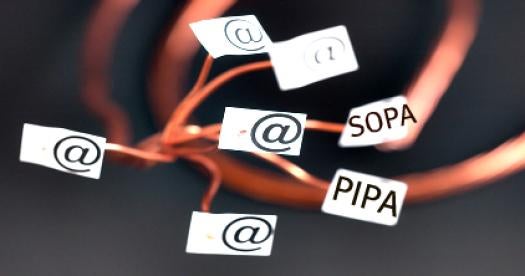This is the second entry in a series on the “Industrial Internet,” focusing on the basic elements, legal issues and procurement implications, principally from the perspective of the end user.
Distinctions between the Industrial Internet and consumer IoT are not hard and fast. For example, many consumer IoT applications are implemented through smartphone apps. On the other hand, some operating systems and related applications are intended for industrial settings such as General Electric’s Predix (which, in turn, may be accessible through smartphone/tablet based apps). Telematics is one area in which the line between the Industrial Internet and consumer IoT is unrecognizable. This entry looks to highlight several distinctions and areas of overlap.
Cyber Threats and Data Privacy. Participants in the Industrial Internet are focused on insulating their “Industrial Intranets” from cyber threats and responding swiftly to cyberattacks. The consumer IoT focuses on personally identifiable information (PII) and other data collected from consumers that are subject to cyberattacks and other vulnerabilities. The industrial sector is concerned with the Administration’s 2013 Executive Order—Improving Critical Infrastructure Cybersecurity, sharing cyber threat information without risk of litigation, and implementing industry-specific standards such as NERC Critical Infrastructure Protection (CIP) Cyber Security Reliability Standards. In the context of the consumer IoT, protection of PII and other sensitive data is addressed under federal and state privacy, data security, and data breach notification laws and regulations, including sector-specific laws such as HIPPA, and industry guidelines.
Enhanced Analytics. The Industrial Internet exists to acquire information from physical assets and implement real time response, make predictive judgements on wear and tear, adjust maintenance and replacement cycles, and to modify equipment design, materials or components based on increasingly sophisticated and powerful data processing capabilities. This feedback will be implemented rapidly over the next several years as the software components of industrial machinery become more central to equipment design and operation. Parallel developments in the consumer IoT are most apparent in the manufacture and maintenance of automobiles as car manufacturers send software updates to vehicles via wireless communications. Presently, the consumer IoT is more focused on real time feedback (wearables) and operations such as app-based home security systems and smart thermostats; more in-depth analytics are on the horizon.
Industrial Intranets v. Consumer IoT — Communications. The consumer IoT relies on unlicensed spectrum having varying propagation and coverage characteristics, commercial mobile service and, in most cases, backhaul via the public Internet to or from smart phones. In some instances, consumer IoT applications may be routed from the mobile services provider to an entity’s MPLS port for delivery to its destination/data center.
Communications over Industrial Intranets are more diverse. Critical infrastructure industry communications from the RF device to enhanced analytics resources may never traverse mobile wireless networks (but conveyed over privately licensed wireless networks), the public Internet or any carrier-provided service. The challenge for critical infrastructure companies is that mobile broadband services and public Internet services are “best efforts” services. SLAs for availability and latency, for example, are not offered. Mobile services providers decline to set aside capacity to provide the wireless equivalents of private line or MPLS offerings.
In manufacturing and petrochemical facilities, communications to and from devices may be conveyed via fiber optic lines for on–premise, real- time review and response, and then conveyed over carrier-provided services to the company’s enhanced analytics resources. In other use cases, transport over the mobile broadband service is essential, such as data communications to and from farm machinery operating in fields or monitoring assets in transit.
Data Ownership. Federal and state privacy laws presume that individuals own their on-line data that companies may collect. The myriad state and federal privacy laws dictate how online companies may acquire, use and share this data, and how this data must be secured, managed and discarded. The questions of ownership and confidentiality of data generated on Industrial Intranets are more nuanced and will likely be a focal point for negotiations going forward.
Consider the operation of heavy equipment, such as jet engines or escalators used in rail commuter networks, such as the DC Metrorail system. The escalator manufacturer and WMATA, respectively, have strong interests in acquiring the performance data of the Metrorail station escalators. The “crunched data” could provide insights into whether recurring downtime events are attributable to improper or insufficient preventive maintenance; design, material or manufacture defects; or improper installation. The data are important to the manufacturer (to implement changes in design or materials) and to end users (to implement changes in maintenance and for purchase decisions for replacement equipment).
A purchaser of capital equipment may also want to know how the performance of its equipment compares to the performance of the same or comparable equipment of other operators. This “relative data” will indicate whether any significant maintenance/down time experienced by the operator are related to design, materials or manufacture defects or to operations or maintenance issues that the operator can address. Over time, equipment warranties could be based on a given product’s performance relative to the performance of the same equipment sold to other companies.




 i
i

